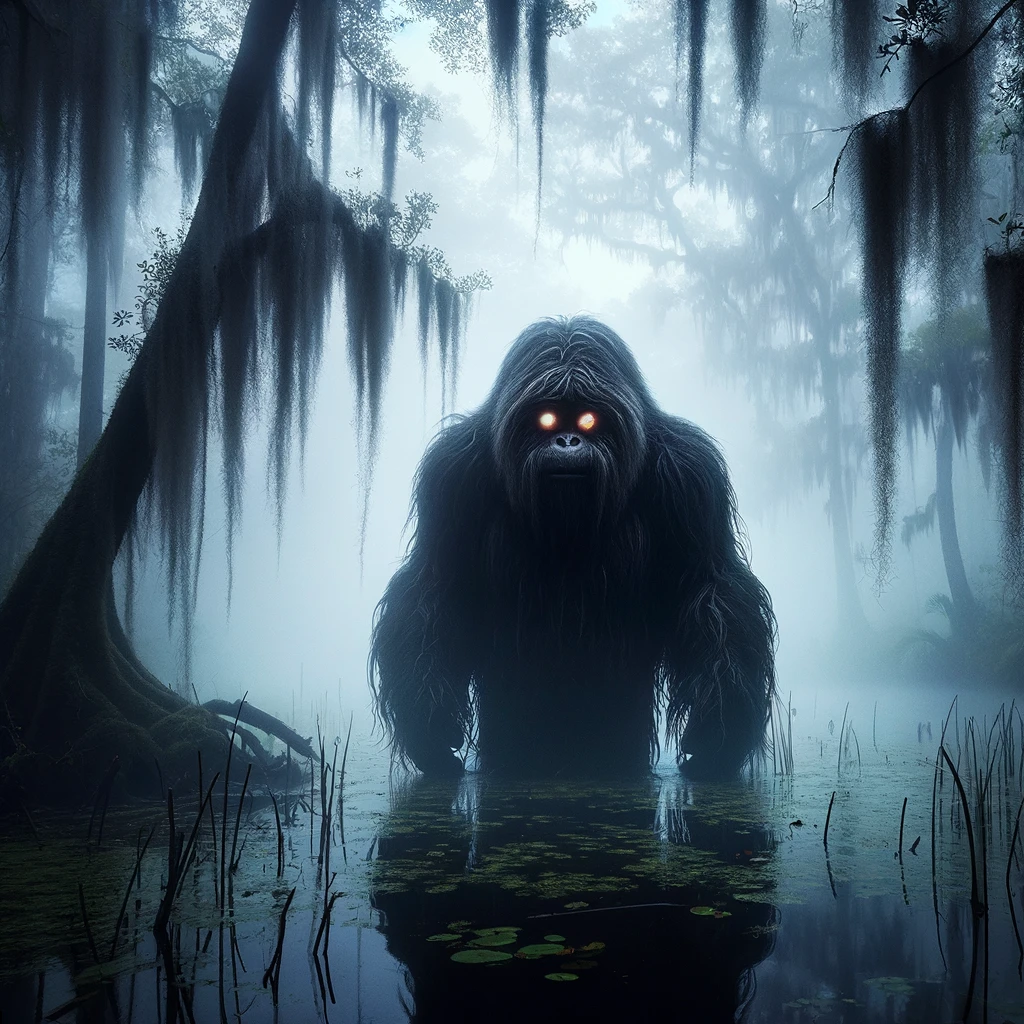In the dense, swampy wilderness of Florida, where the line between myth and reality blurs, lurks a creature as mysterious as it is malodorous. Known as the Skunk Ape, this elusive cryptid has captured the imagination and curiosity of locals, tourists, and researchers alike. Described as a large, bipedal being covered in thick fur, the Skunk Ape is said to inhabit the remote areas of the Southeastern United States, with Florida being the epicenter of sightings and lore.
A Stinky Legend Emerges
The Skunk Ape, often called the Florida Bigfoot, owes its name to its reportedly horrendous odor, reminiscent of sulfur or rotten eggs, a scent so potent it can reportedly make one’s eyes water. Sightings of the creature have been reported for decades, with a significant peak in the 1960s and 1970s, drawing parallels to the more widely known Bigfoot of the Pacific Northwest. However, what sets the Skunk Ape apart, aside from its pungent aroma, is its purported habitat: the humid, alligator-infested swamps of Florida.
Eyewitness Accounts and Photographic Evidence
Over the years, numerous individuals have come forward with their accounts of encountering the Skunk Ape. Descriptions often emphasize its towering height, estimated between 6 to 7 feet, its red or dark brown fur, and its glowing, sometimes reflective, eyes. Some of the most compelling evidence includes photographs and videos, though skeptics argue these could be hoaxes or misidentifications of native wildlife, such as bears or large primates escaped from captivity.
Despite the skepticism, a handful of photographs have stirred considerable interest, including one from 2000, sent anonymously to the Sarasota County Sheriff’s Department, depicting what appears to be a large, ape-like creature lurking behind foliage.
Scientific Skepticism and the Quest for Proof
The scientific community remains largely skeptical of the Skunk Ape’s existence, citing a lack of concrete evidence such as bones, DNA, or clear, undisputed photographic proof. Critics argue that the swampy terrain of Florida could easily conceal the remains of large animals, explaining the absence of physical evidence. Meanwhile, believers in the Skunk Ape hold out hope that the creature is a yet-to-be-discovered species, possibly a relic population of Gigantopithecus or an unknown species of primate.
Cultural Impact and Conservation Efforts
The legend of the Skunk Ape has become an integral part of Florida’s folklore and has had a noticeable impact on local culture. It has inspired merchandise, themed attractions, and even conservation efforts aimed at preserving the creature’s supposed habitats. The Skunk Ape Research Headquarters in Ochopee, Florida, serves as both a museum and an information center, where enthusiasts can learn about the creature and report sightings.

The Skunk Ape remains one of the most captivating cryptids in American folklore, embodying the intrigue of the unexplained and the wildness of Florida’s landscapes. Whether it’s a misunderstood piece of local wildlife, a series of elaborate hoaxes, or a genuine undiscovered species, the Skunk Ape’s legend continues to thrive, a testament to the human fascination with the mysteries of the natural world. As long as the swamps whisper and the shadows move, the story of the Skunk Ape will continue to unfold, challenging our understanding of what lurks in the unseen corners of our planet.
